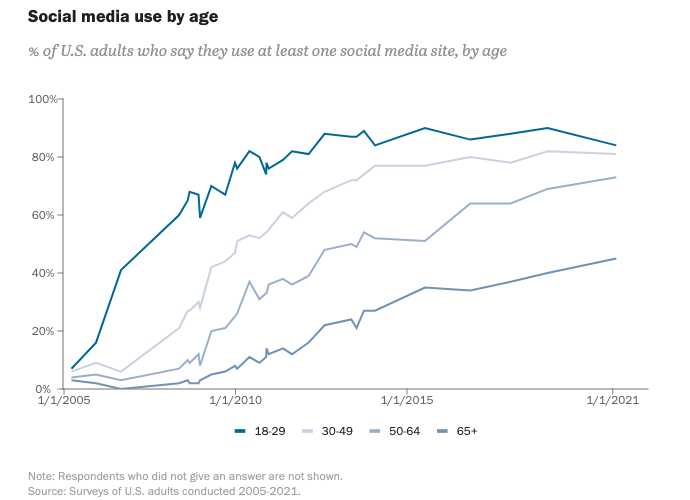Blockchain interoperability: Web3 is about freedom, both financial and data freedom, but currently the majority of people are not managing to even gain access to a decentralised wallet to kickstart their own independence. The problem? Blockchain interoperability.
“Web3 is about free choice and democracy”
Gun Gun Febrianza
If we want to see mass adoption in Web3, the conversation desperately needs to evolve beyond fights over specific chains. By focusing on the people, rather than the chain, we can get more of us onboard.
Blockchain interoperability, beyond the buzzwords
Except for a few unique developers no one really loves blockchains or deep tech. People love experiences and what they can use tech for. No one has ever used an app because it was hosted on a specific cloud by Google, Amazon Web Services, or Microsoft Azure. In the same way, in Web3, people will use a decentralised app (dApps) they love, not because these dApps are built on specific chains, but because of the value they extract from them.
Blockchain interoperability is the latest buzzword in crypto and its popularity is not just because it looks good on a VC pitch deck. Interconnectivity in the Web3 ecosystem is not a luxury but a necessity. Mass adoption will not happen if users cannot transact across chains easily and seamlessly. The type of wallets they use should not be a concern. To confirm, blockchain interoperability is defined as follows:
“Blockchain interoperability refers to the ability of blockchains to communicate with other blockchains. The foundation of blockchain interoperability is cross-chain messaging protocols, which enable blockchains to read data from and/or write data to other blockchains.”
Chainlink
These benefits do not come without challenges. Interacting across chains is a nuisance for users, not to mention the tedious multiple transactions for sign-offs, and the gas fees associated with bridging between those chains. The truth, as illustrated above, is that users are being forced to care what blockchains they are using, which is a turnoff.
Web3 needs to feel chainless if it’s going to garner wide participation and support from a mainstream audience. A largely chainless UX will also enhance decentralisation and pave the way for improved onboarding and data security, key aspects currently plaguing cross-chain bridging solutions — see all the hacks from 2022 and in the past.
Blockchain interoperability: The power of Web3 simplicity
As it stands, Web3 is not designed to be simple. From the tech to the language associated with it, we have been gatekeeping these resources and tools while preaching inclusivity. For those new to Web3, the space requires a lot of unraveling and investigating – from unpacking the jargon on crypto Twitter to deciphering how to set up basically any decentralised wallet.
A great way to think about this is to consider most of our parents. Can you see your mom bridging, swapping, and changing networks just to buy an NFT she likes or take out a DeFi loan? Unlikely.

Our parents adopted Facebook as it grew more popular and straightforward – with simple dopamine hits through likes and instant messaging. They didn’t need to know what happened to make it possible for them to post long-winded status updates.
There are multiple ways to hand-hold the majority of Web2 users into Web3. Some examples include social sign-in, where users can log into a dApp with just an email secured by multi-party computation (MPC). Ways to buy and checkout with local currency, so users can get involved in areas of Web3 without needing to navigate buying coins first. Finally, social recovery which removes the threat of losing access to your account forever if you lose your keys.
We need to abstract the barriers of Web3 UX into one-click experiences so that everyone can access and benefit from a multi-chain, decentralised future.
A little bit technical: Blurring the chains with batch transactions
A simpler, surface experience is the single biggest growth lever to catapult Web3 into the mainstream. For this, batch transactions are key. They keep the complexities under the hood and enable dApps to place multiple transactions together for approval and bridging.
Proposed in 2020 as EIP-4337, batch transactions have yet to be fully utilised despite their incredible potential.
Through abstraction, the blockchain interoperability between dApps on different chains feels as though it is all on the same network.
For example, a dApp could batch multiple transactions to approve bridging between Ethereum and Solana and follow this up by allowing any contract call with the bridged funds on Solana. On the front end, this user simply says what funds they want transferred across the bridges and the dApps does the rest for them.
In addition, batch transactions allow for lower fees, as users could contribute to one single transaction fee in a batch rather than paying fees for each transaction individually.
This doesn’t mean we are returning to centralised bank standards of hiding the details. People can choose to find the details of all transactions on the main chain if they wish, keeping up the open ethos of Web3.
One-click solutions, one open vision for mass adoption of Web3
So far, batch transactions are an under-discussed element of dApps but one that can be a powerful force as we focus on building for the next big take of users.
By integrating these solutions, we can make sure that when the next hype cycle brings the crypto curious, they won’t need to jump through the hurdles those of us already involved had to. By making each wave of users easier to onboard we will make our way to simpler, one-click features that are expected by newbies.

This is not about removing the value of individual chains but rather making it possible for users to access each one’s unique value easily through blockchain interoperability.
Rather than fighting over which chain is best adding a chainless framework, everyone can be welcomed into the crypto ecosystem in 2023 and beyond.





